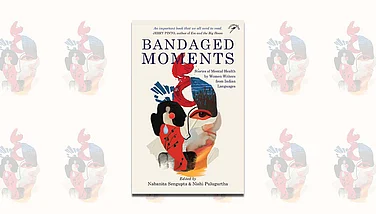The work is a translation of Lal Teen ki Chaat, Verma's second novel published originally in Hindi in 1974. The book was written at a time when he was being looked upon as one of the pioneers of the "nai kahani" (the new story) genre. A creative artist's response to the literature of Premchand and Yashpal, "nai kahani" talked of the urban human being, middle-class values, aspirations and ideals. If the theme for thought was different, so was the language which acquired a richness of texture and subtle nuances unlike ever before.
Translated by Kuldip Singh, who has done an extraordinary job, a perusal of this book is a trek in trance. With captivating delicacy, the work recreates a complex set of emotions at work within Kaya's mind. Nebulous strands of memory come alive in her dreams, and passages of rare descriptive beauty accompany her mental state: "All the things put aside as I went along filed past me...and I allowed myself to be led back to a flickering light of the past where time and happiness and pain were still undefined, where there was no memory.... But I cannot linger here; I'm in a desperate hurry to get back."
Kaya's brush with realities and dreams alike serve as signposts in her voyage of self-discovery. However, as the lines separating the real and the virtual blur, one may be inclined to assume that she takes life a little too seriously. Yet, such is Verma's handling of his protagonist that one is forced to accept her otherness as a fact of individuality. Even when she breaks into a delirious dance, she makes a statement of attitude that continues to flicker in the memory of the reader






















